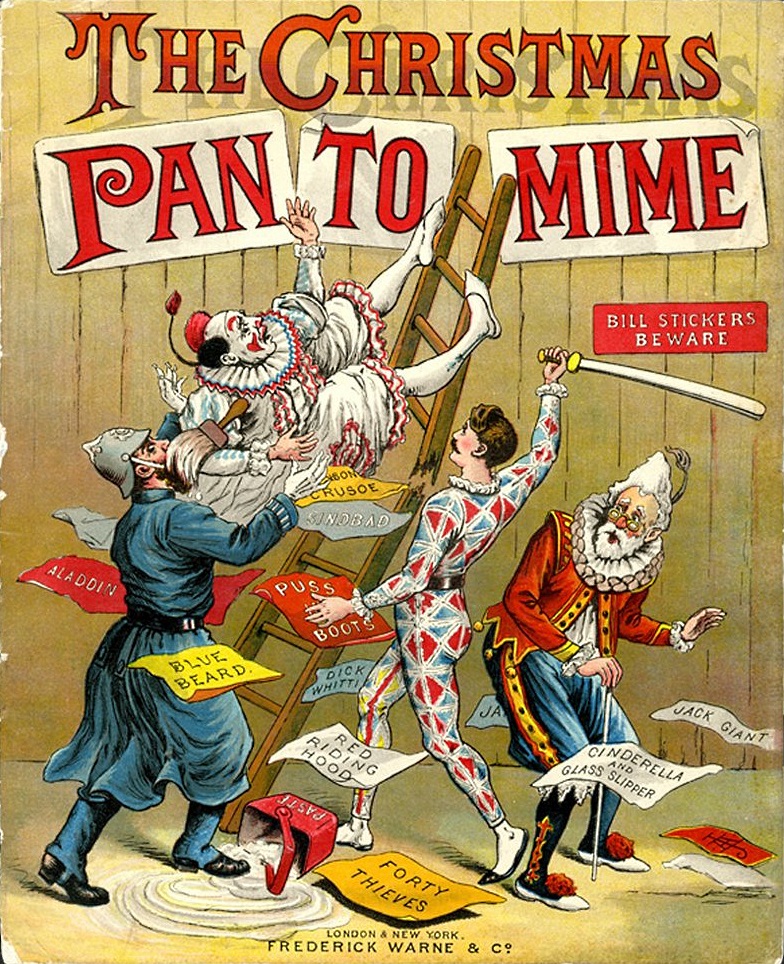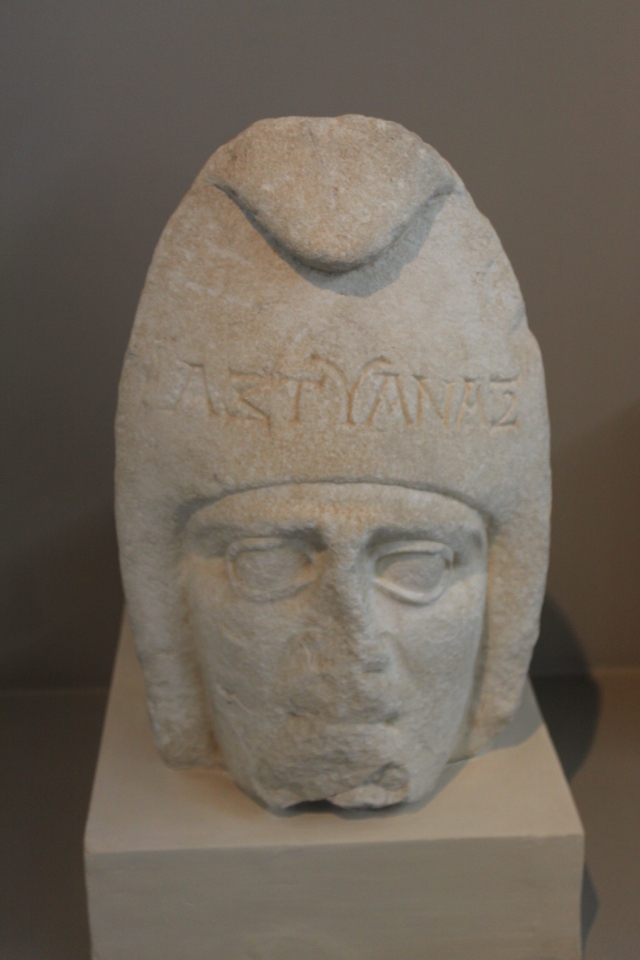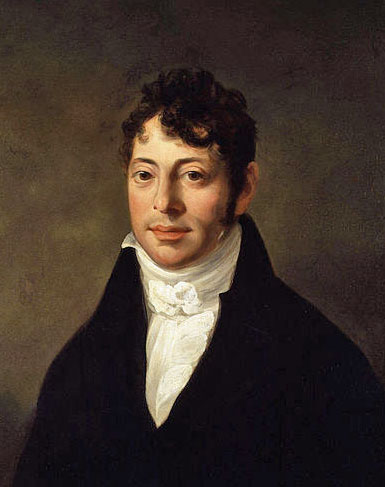|
Harlequin
Harlequin (, , ; , ) is the best-known of the comic servant characters (Zanni) from the Italian commedia dell'arte, associated with the city of Bergamo. The role is traditionally believed to have been introduced by the Italian actor-manager Zan Ganassa in the late 16th century, was definitively popularized by the Italian actor Tristano Martinelli in Paris in 1584–1585, and became a stock character after Martinelli's death in 1630. The Harlequin is characterised by his checkered costume. His role is that of a light-hearted, nimble, and Tricky slave, astute servant, often acting to thwart the plans of his master, and pursuing his own love interest, Columbina, Columbine, with wit and resourcefulness, often competing with the sterner and melancholic Pierrot. He later develops into a prototype of the romantic hero. Harlequin inherits his physical agility and his trickster qualities, as well as his name, from a mischievous "Devil in Christianity#Early Middle Ages, devil" character ... [...More Info...] [...Related Items...] OR: [Wikipedia] [Google] [Baidu] [Amazon] |
Harlequinade
''Harlequinade'' is an English comic theatrical genre, defined by the ''Oxford English Dictionary'' as "that part of a pantomime in which the harlequin and clown play the principal parts". It developed in England between the 17th and mid-19th centuries. It was originally a slapstick adaptation or variant of the ''commedia dell'arte'', which originated in Italy and reached its apogee there in the 16th and 17th centuries. The story of the Harlequinade revolves around a comic incident in the lives of its five main characters: Harlequin, who loves Columbina, Columbine; Columbine's greedy and foolish father Pantaloon (evolved from the character Pantalone), who tries to separate the lovers in league with the mischievous Clown; and the servant, Pierrot, usually involving chaotic chase scenes with a bumbling policeman. Originally a mime (silent) act with music and stylised dance, the harlequinade later employed some dialogue, but it remained primarily a visual spectacle. Early in its dev ... [...More Info...] [...Related Items...] OR: [Wikipedia] [Google] [Baidu] [Amazon] |
Pantomime
Pantomime (; informally panto) is a type of musical comedy stage production designed for family entertainment, generally combining gender-crossing actors and topical humour with a story more or less based on a well-known fairy tale, fable or folk tale.Reid-Walsh, Jacqueline. "Pantomime", ''The Oxford Encyclopedia of Children's Literature'', Jack Zipes (ed.), Oxford University Press (2006), Pantomime is a participatory form of theatre developed in England in the 18th century, in which the audience is encouraged and expected to sing along with certain parts of the music and shout out phrases to the performers. The origins of pantomime reach back to ancient Greek classical theatre. It developed partly from the 16th century commedia dell'arte tradition of Italy and partly from other European and British stage traditions, such as 17th-century masques and music hall. An important part of the pantomime, until the late 19th century, was the harlequinade. Modern pantomime is perfor ... [...More Info...] [...Related Items...] OR: [Wikipedia] [Google] [Baidu] [Amazon] |
Joseph Grimaldi
Joseph Grimaldi (18 December 1778 – 31 May 1837)Moody, Jane"Grimaldi, Joseph" ''Oxford Dictionary of National Biography'', Oxford University Press, accessed 13 February 2012 was an English actor, comedian and dancer, who became the most popular English entertainer of the Regency era.Byrne, Eugene"The patient" Historyextra.com, 13 April 2012 In the early 19th century, he expanded the role of Harlequinade#Clown, Clown in the harlequinade that formed part of British pantomimes, notably at the Theatre Royal, Drury Lane and the Sadler's Wells and Royal Opera House, Covent Garden theatres. He became so dominant on the London comic stage that the harlequinade role of Clown became known as "Joey", and both the nickname and Grimaldi's Clown#White and Auguste, whiteface make-up design were, and still are, used by other types of clowns. Grimaldi originated catchphrases such as "Here we are again!", which continue to feature in modern pantomimes. Born in London to an entertainer fa ... [...More Info...] [...Related Items...] OR: [Wikipedia] [Google] [Baidu] [Amazon] |
Pierrot
Pierrot ( , ; ), a stock character of pantomime and commedia dell'arte, has his origins in the late 17th-century Italian troupe of players performing in Paris and known as the Comédie-Italienne. The name is a hypocorism, diminutive of ''Pierre'' (Peter), using the suffix ''wikt:-ot#French, -ot'' and derives from the Italian Pedrolino. His character in contemporary popular culture—in poetry, fiction, and the visual arts, as well as works for the stage, screen, and concert hall—is that of the sad clown, often pining for love of Columbina, Columbine (who usually breaks his heart and leaves him for Harlequin). Performing unmasked, with a whitened face, he wears a loose white blouse with large buttons and wide white pantaloons. Sometimes he appears with a frilled collaret and a hat, usually with a close-fitting crown and wide round brim and, more rarely, with a conical shape like a dunce's cap. Pierrot's character developed from that of a buffoon to become an avatar of the dise ... [...More Info...] [...Related Items...] OR: [Wikipedia] [Google] [Baidu] [Amazon] |
John Rich (producer)
John Rich (1692–26 November 1761) was an important director and theatre manager in 18th-century London. He opened Lisle's Tennis Court, The New Theatre at Lincoln's Inn Fields in 1714, which he managed until he built the Royal Opera House#First theatre, Theatre Royal, Covent Garden in 1732. He managed Covent Garden until 1761, putting on ever more lavish productions. He popularised pantomime on the English stage and played a dancing and mute Harlequin himself from 1717 to 1760 under the stage name of "Lun.", PeoplePlayUK Theatre Museum, retrieved 2 July 2007 Rich's version of the servant character, Arlecchino, moved away from the poor, dishevelled, loud, and crude character, to a colourfully-dressed, silent Harlequin, performing fanciful tricks, dances and magic. Rich's decision to be a silent character was influenced by his unappealing voice, of which he was well aware, and the British idea of the Harlequin character was heavily inspired by Rich's performances. Biography ... [...More Info...] [...Related Items...] OR: [Wikipedia] [Google] [Baidu] [Amazon] |
Tristano Martinelli
Tristano Martinelli ( 1630), called ''Dominus Arlecchinorum'', the "Master of Harlequins", was an Italian actor in the ''commedia dell'arte'' tradition. He is probably the first actor to use the name "Harlequin" for the ''secondo'' ("second") Zanni role. Biography Martinelli was active in France in 1584 to 1585, where he presumably first acted in his ''Arlequin'' role. There is no mention of the ''Arlequin, Arlecchino,'' or ''Harlequin'' character prior to Martinelli's time in Paris. Arlecchino first clearly appears in Martinelli's 1601 publication ''Compositions de Rhetorique,'' yet Tristano Martinelli would follow his name in 1590s signatures with "detto Arlechino comico''''', or'' '''alias Arlechino'''"''.'' For the Carnival of 1584, he picked a name taken from French folklore, the devil ''Herlequin'', for his performance to a Parisian audience. His character wore a linen costume of colourful patches, and a hare-tail on his cap to indicate cowardice, a black leather half- ... [...More Info...] [...Related Items...] OR: [Wikipedia] [Google] [Baidu] [Amazon] |
William Payne (pantomimist)
William Henry Schofield Payne (1804–18 December 1878) was an actor, dancer and pantomime artist, who created much of the stage business connected with the character Harlequin in 19th-century harlequinades. He was the father of the Victorian era pantomime clowns the Payne Brothers. Life and career Born in the City of London in 1804, W H Payne was apprenticed to Isaac Cowen, a stockbroker; but in his eighteenth year he ran away, and joined a travelling theatrical company in the Warwickshire circuit. He rose to play small parts at the Theatre Royal, Birmingham. Returning to London, he studied under Grimaldi and Bologna at Sadler's Wells Theatre, and then obtained an engagement at an East-end theatre, and in the following year (1825) migrated to the Pavilion Theatre. Here he remained some years, playing small parts, which he raised into importance by the admirable expression of his pantomimic action. At Christmas he represented the character Clown, with Miss Rountree (afterwards ... [...More Info...] [...Related Items...] OR: [Wikipedia] [Google] [Baidu] [Amazon] |
Dante Alighieri
Dante Alighieri (; most likely baptized Durante di Alighiero degli Alighieri; – September 14, 1321), widely known mononymously as Dante, was an Italian Italian poetry, poet, writer, and philosopher. His ''Divine Comedy'', originally called (modern Italian: ) and later christened by Giovanni Boccaccio, is widely considered one of the most important poems of the Middle Ages and the greatest literary work in the Italian language. Dante chose to write in the vernacular, specifically, his own Tuscan dialect, at a time when much literature was still written in Latin, which was accessible only to educated readers, and many of his fellow Italian poets wrote in French or Provençal dialect, Provençal. His ' (''On Eloquence in the Vernacular'') was one of the first scholarly defenses of the vernacular. His use of the Florentine dialect for works such as ''La Vita Nuova, The New Life'' (1295) and ''Divine Comedy'' helped establish the modern-day standardized Italian language. His wo ... [...More Info...] [...Related Items...] OR: [Wikipedia] [Google] [Baidu] [Amazon] |
Herla
Herla or King Herla () is a legendary leader of the mythical Germanic Wild Hunt and the name from which the Old French term '' Herlequin'' may have been derived. Herla often has been identified as Woden and in the writings of the twelfth-century writer Walter Map, he is portrayed as a legendary king of the Britons who became the leader of the Wild Hunt after a visit to the Otherworld, only to return some three hundred years later, after the Anglo-Saxon settlement of Britain. Map's tale occurs in two versions in his '' De nugis curialium''. The first and longer account, found in section 1.12, provides far more detail; it tells of Herla's encounter with an otherworldly being, his journey to the latter's homeland, his transformation into the leader of the Hunt after his return to the human realm, and, finally, the disappearance of Herla and his band during the first year of the reign of Henry II of England (a synopsis of this longer version appears below). The second account, ... [...More Info...] [...Related Items...] OR: [Wikipedia] [Google] [Baidu] [Amazon] |
Inferno (Dante)
''Inferno'' (; Italian for 'Hell') is the first part of Italian writer Dante Alighieri's 14th-century narrative poem ''The Divine Comedy'', followed by and . The ''Inferno'' describes the journey of a fictionalised version of Dante himself through Christian views on Hell, Hell, guided by the Ancient Rome, ancient Roman poet Virgil. In the poem, Hell is depicted as nine concentric circles of torment located within the Earth; it is the "realm[...] of those who have rejected spiritual values by yielding to bestial appetites or violence, or by perverting their human intellect to fraud or malice against their fellowmen". As an allegory, the ''Divine Comedy'' represents the journey of the soul toward God, with the ''Inferno'' describing the recognition and rejection of sin. Prelude to Hell Canto I The poem begins on the night of Maundy Thursday on March 24 (or April 7), 1300, shortly before the dawn of Good Friday. The narrator, Dante himself, is 35 years old, and thus "midway i ... [...More Info...] [...Related Items...] OR: [Wikipedia] [Google] [Baidu] [Amazon] |
Adam De La Halle
Adam de la Halle (1245–50 – 1285–8/after 1306) was a French poet-composer '' trouvère''. Among the few medieval composers to write both monophonic and polyphonic music, in this respect he has been considered both a conservative and progressive composer, resulting in a complex legacy: he cultivated admired representatives of older trouvère genres, but also experimented with newer dramatic works. Adam represented the final generation of the ''trouvère'' tradition and "has long been regarded as one of the most important musical and literary figures of thirteenth-century Europe". Adam's literary and musical works include chansons and jeux-partis (poetic debates) in the style of the ''trouvères''; polyphonic rondel and motets in the style of early liturgical polyphony; and a musical play, '' Jeu de Robin et Marion'' (), which is considered the earliest surviving secular French play with music. He was a member of the Confrérie des jongleurs et bourgeois d'Arras, a f ... [...More Info...] [...Related Items...] OR: [Wikipedia] [Google] [Baidu] [Amazon] |







